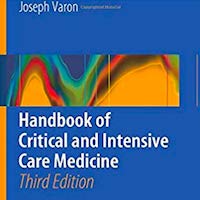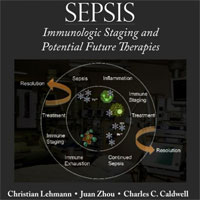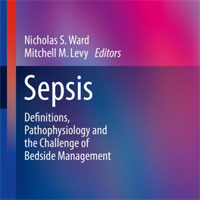Tag: infection
Extracorporeal Life Support: The ELSO Red Book, 6th Edition
Written by over two hundred experts from around the world, this new edition is the definitive reference text on Extracorporeal Life Support, providing both the latest evidence and practical advice on how to clinically manage... read more
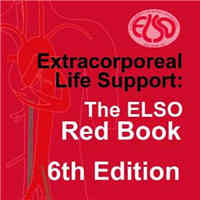
Association Between the Lactate-to-Albumin Ratio (LAR) Index and AKI Risk in Critically Ill Patients with Sepsis
Lactate-to-albumin ratio (LAR) is an emergency predictive indicator of sepsis-related mortality. An elevated LAR is associated with poor outcomes in critically ill patients. However, its predictive value for acute kidney... read more
Which Antimicrobial Treatment for Patients with Bloodstream Infection During ECMO Support?
Enterococcus sp. was incriminated in about a third of BSI among patients with ECMO support. High appropriateness would only be obtained with piperacilline/tazobactam or carbapenems in association with vancomycin while 3rd... read more
Risk Factors for Subsequent LRTI Following an Infant RSV Hospitalization
Fifteen percent of infants experience at least one other medically attended lower respiratory tract infection (MA LRTI) after an respiratory syncytial virus (RSV) hospitalization in the same season, and approximately half... read more
Enteric Gram-negative Infections on Lung Transplant Clinical Outcomes
Lung transplant recipients (LTR) with more complicated post-operative courses were more likely to develop enteric gram-negative (GNR) infections which led to increased post-transplant morbidities. Pre-transplant GNR colonization... read more
Prescribing Patterns and Effectiveness of Ceftolozane/Tazobactam in Immunosuppressed Patients
Treatment with Ceftolozane/Tazobactam (C/T) resulted in a high rate of clinical success in this real-world cohort of immunosuppressed patients, despite dosing that frequently deviated from labelled dosing. Pseudomonas... read more
Cytokeratin-18 Levels in COVID-19 Patients
This study analyzed 176 samples, including 63 ICU-admitted patients and 88 non-ICU-admitted patients. A substantial difference was found between the AST and CK-18 levels of the patients receiving ICU care and those who did... read more
Ventilator Associated Pneumonia in ICU: Identification, Evaluation and Prevention
This study highlights the significant prevalence of Pseudomonas aeruginosa (PA) as a major bacterial pathogen causing ventilator-associated pneumonia (VAP) in ICU patients, with a high detection rate of 71.7% in tested patients,... read more
New Insights: Mortality in Nosocomial Lower Respiratory Tract Infections
This multicenter, multinational study conducted in Europe and Latin America sheds light on the clinical landscape of nLRTI, which continues to be an essential issue in the context of critical care. We provide insights... read more
Rapid and Accurate Sepsis Identification Using AI
This study demonstrates that by providing streamlined predictions using CBC+DIFF data without requiring extensive clinical parameters, the AI-CDSS can be seamlessly integrated into clinical workflows, enhancing rapid, accurate... read more
Managing Recurrent Septic Shock – Dual Blood Purification with CytoSorb and oXiris
This case report presents a patient with recurrent septic shock who experienced significant clinical improvement after receiving adjunctive treatment with a combination of continuous renal replacement therapy (CRRT) using... read more
Predicting Sepsis Outcomes – Efficacy of Early Warning Scores
In resource-limited settings, NEWS proved to be the most effective tool for early risk stratification in sepsis patients. Its adoption could significantly enhance sepsis management and improve outcomes in emergency departments... read more
Prognostic Value of Composite Inflammatory Markers in COPD Patients
Elevated systemic immune inflammation index (SII), systemic inflammatory response index (SIRI), pan-immune inflammation value (PIV), neutrophil-to-lymphocyte ratio (NLR), and platelet-to-lymphocyte ratio (PLR) are associated... read more
Prolonged vs. Intermittent Infusion of Meropenem For Patients with Severe Infection
Prolonged infusion of meropenem is more effective than intermittent infusion in reducing mortality, improving clinical outcomes, and enhancing microbial eradication, without increasing adverse events. These benefits are... read more
Zosyn vs. Efepime: Which One Is Safer?
While both piperacillin-tazobactam and cefepime are commonly used to treat infections caused by Pseudomonas aeruginosa in hospitalized patients, there is a concern that piperacillin-tazobactam may lead to acute kidney injury... read more
Inflammatory Markers and Severity in COVID-19 Patients with Clostridioides Difficile Co-Infection
The interplay of Severe Acute Respiratory Syndrome Coronavirus 2 (SARS-CoV-2) infection and Clostridioides difficile infection (CDI) poses a critical clinical challenge. The resultant inflammatory milieu and its impact... read more
Multidisciplinary Approaches and Molecular Diagnostics in New-Onset Refractory Status Epilepticus and Nontuberculous Mycobacterial CNS Infections in the ICU
The diagnosis and management of complex neurological conditions such as New-Onset Refractory Status Epilepticus (NORSE) and central nervous system (CNS) infections caused by non-tuberculous mycobacteria (NTM) pose substantial... read more
RSV Infection – Epidemiology and Clinical Risk Factors
Respiratory syncytial virus (RSV) infection is the most frequent reason for hospitalization of infants in developed countries. Premature birth without or, especially, with chronic lung disease of prematurity, congenital heart... read more
Temporal Trends of RSV-Associated US ICU Admissions
Wide variations in regional and seasonal patterns in hospital and ICU admissions were noted in children with respiratory syncytial virus–associated acute respiratory illness across the United States. Results from our... read more
RSV Outbreak in a Pediatric ICU
The Royal Liverpool Children's Hospital—Alder Hey pediatric intensive care unit (PICU) usually has a low rate of nosocomial respiratory syncytial virus (RSV) infection. We report and analyze a major outbreak of nosocomial... read more
Respiratory Syncytial Virus: Diagnosis and Treatment
Respiratory syncytial virus (RSV) is a respiratory virus which results in symptoms similar to cold. This virus spreads through the drops coming from the nose and throat of an infected person, while sneezing and coughing.... read more
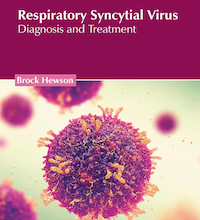
Immunocompromised People May Not Produce Enough Protective Antibodies Against RSV After Vaccination
This study demonstrated heterogeneous antibody response to respiratory syncytial virus (RSV) vaccines among immunocompromised persons. In contrast to universal seroconversion and preF IgG fold rises greater than 10 in immunocompetent... read more




